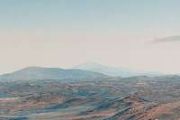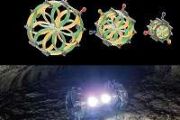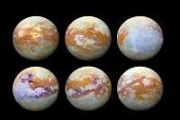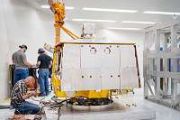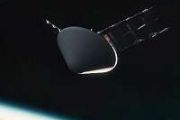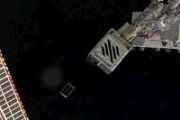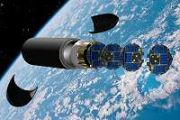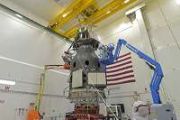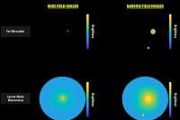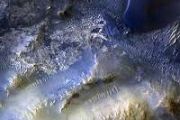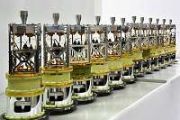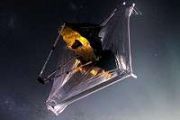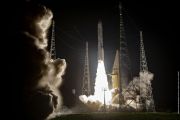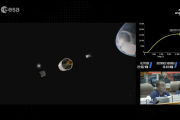
Copernical Team
Perseverance investigates geologically rich Mars terrain
 The latest findings provide greater detail on a region of the Red Planet that has a watery past and is yielding promising samples for the NASA-ESA Mars Sample Return campaign.
NASA's Perseverance rover is well into its second science campaign, collecting rock-core samples from features within an area long considered by scientists to be a top prospect for finding signs of ancient microbial
The latest findings provide greater detail on a region of the Red Planet that has a watery past and is yielding promising samples for the NASA-ESA Mars Sample Return campaign.
NASA's Perseverance rover is well into its second science campaign, collecting rock-core samples from features within an area long considered by scientists to be a top prospect for finding signs of ancient microbial Communications restored with CAPSTONE in latest update
 The CAPSTONE team has received some relatively good news on the recovery progress for the spacecraft. The communications situation has dramatically improved, the power state of the spacecraft appears to be sufficient for continuous (duty cycled) heating of the propulsion system which dropped below its operational temperature.
Over the past few days, CAPSTONE's power - though limited by the
The CAPSTONE team has received some relatively good news on the recovery progress for the spacecraft. The communications situation has dramatically improved, the power state of the spacecraft appears to be sufficient for continuous (duty cycled) heating of the propulsion system which dropped below its operational temperature.
Over the past few days, CAPSTONE's power - though limited by the Week in images: 12-16 September 2022

Week in images: 12-16 September 2022
Discover our week through the lens
Earth from Space: UK heatwave
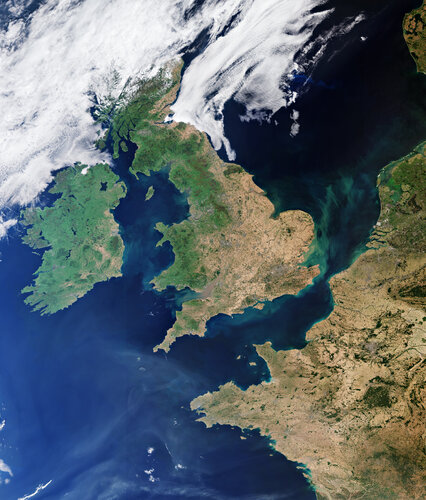
This summer, heatwaves struck Europe, North Africa, the US and Asia with temperatures reaching over 40°C in places – breaking many long-standing records. Images from the Copernicus Sentinel-3 mission show the scale of Britain’s heatwave as it baked in extreme temperatures in August.
Register: Open Day for visitors with disabilities

Registration has begun for the ESA Open Day at ESTEC on Saturday 1 October, open to people with disabilities. ESA’s ESTEC technical centre in Noordwijk, the Netherlands, will be open from 10:00 to 14:00, giving visitors with disabilities the opportunity to tour this leading European space establishment at their own pace. The event will conclude with a talk by ESA astronaut Matthias Maurer.
NASA's Perseverance rover investigates geologically rich Mars terrain

NASA's Perseverance rover is well into its second science campaign, collecting rock-core samples from features within an area long considered by scientists to be a top prospect for finding signs of ancient microbial life on Mars.
Mars rover sees hints of past life in latest rock samples
 NASA's Perseverance Mars rover has detected its highest concentrations yet of organic molecules, in a potential signal of ancient microbes that scientists are eager to confirm when the rock samples are eventually brought to Earth.
While organic matter has been found on the Red Planet before, the new discovery is seen as especially promising because it came from an area where sediment and sal
NASA's Perseverance Mars rover has detected its highest concentrations yet of organic molecules, in a potential signal of ancient microbes that scientists are eager to confirm when the rock samples are eventually brought to Earth.
While organic matter has been found on the Red Planet before, the new discovery is seen as especially promising because it came from an area where sediment and sal Media Briefing: Europe takes part in historic asteroid impact demonstration
 Video:
01:04:23
Video:
01:04:23
On September 27 at 01:14 CEST, NASA’s DART (for ‘Double Asteroid Redirection Test’) mission is lined up to collide with a body called Dimorphos – a 160-m diameter ‘moonlet’ of a larger asteroid called Didymos – to try and measurably shift its orbit. In this media briefing, hear more about Europe’s contribution to the DART mission, and learn of ESA’s own mission with a close-up survey of Dimorphos, conducted by a spacecraft called HERA. The HERA mission is planned for launch in 2024.
Lowell Discovery Telescope plays key role in DART planetary defense test mission
 Within two weeks, the DART spacecraft will impact the asteroid moon Dimorphos as it completes the world's first planetary defense test mission. The success of the effort relies heavily on the Lowell Discovery Telescope, which scientists are using for both before- and after-impact observations.
The DART (Double Asteroid Redirection Test) mission is an outgrowth of ongoing interest in planet
Within two weeks, the DART spacecraft will impact the asteroid moon Dimorphos as it completes the world's first planetary defense test mission. The success of the effort relies heavily on the Lowell Discovery Telescope, which scientists are using for both before- and after-impact observations.
The DART (Double Asteroid Redirection Test) mission is an outgrowth of ongoing interest in planet No sighting in northern Philippines of Chinese rocket debris



